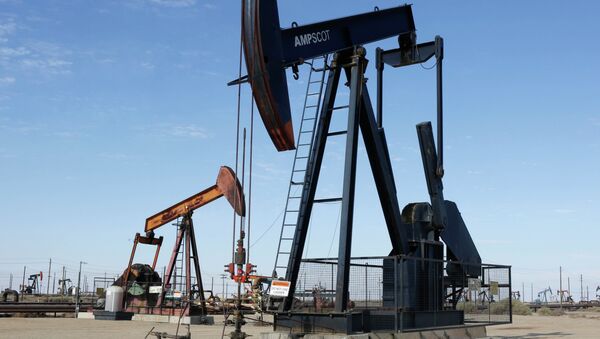HOUSTON (Sputnik) — In December 2015, US President Barack Obama signed into law the repeal of a 40-year ban on exporting oil. In early January, the United States sent its first shipments of light crude oil to Europe.
"Personally, I don’t think that lifting of the US export ban is going to change anything in the context of low oil prices, up to $55-60 per barrel. The model of the US oil market is quite complicated and unique, which is based on an active exchange of resources," Shayakhmetov told Sputnik on Tuesday on the sidelines of the IHS Energy CERAWeek conference in Houston, Texas.
The Tatneft representative explained that, on average, the United States covered 50 percent of oil demand with its own production and the other half with imports.
"Under the expected durable oil price stagnation, it will be hard for the United States to keep the supply at the current level. That is why when the borders open, the United States starts to export oil but it will import the same amount, and overproduction or structural changes in the oil market will not occur," he said.
Shayakhmetov added that "balance wise, world oil supply and demand will not change by opened exports streams."
"The driver for opening the border, in my opinion, was not oil, it was gas, shale gas in particular, which requires clearer rules for return on investments in midstream infrastructure, including for LNG," he stressed. "The US decision to export oil was prompted more by other factors than by a probable attempt to influence the market."
The Tatneft representative added that the export ban lift will have a positive effect on the US oil price determination.
The decision to allow the sale of US crude on the world market comes at a time when oil price levels have been lowest in more than a decade.

